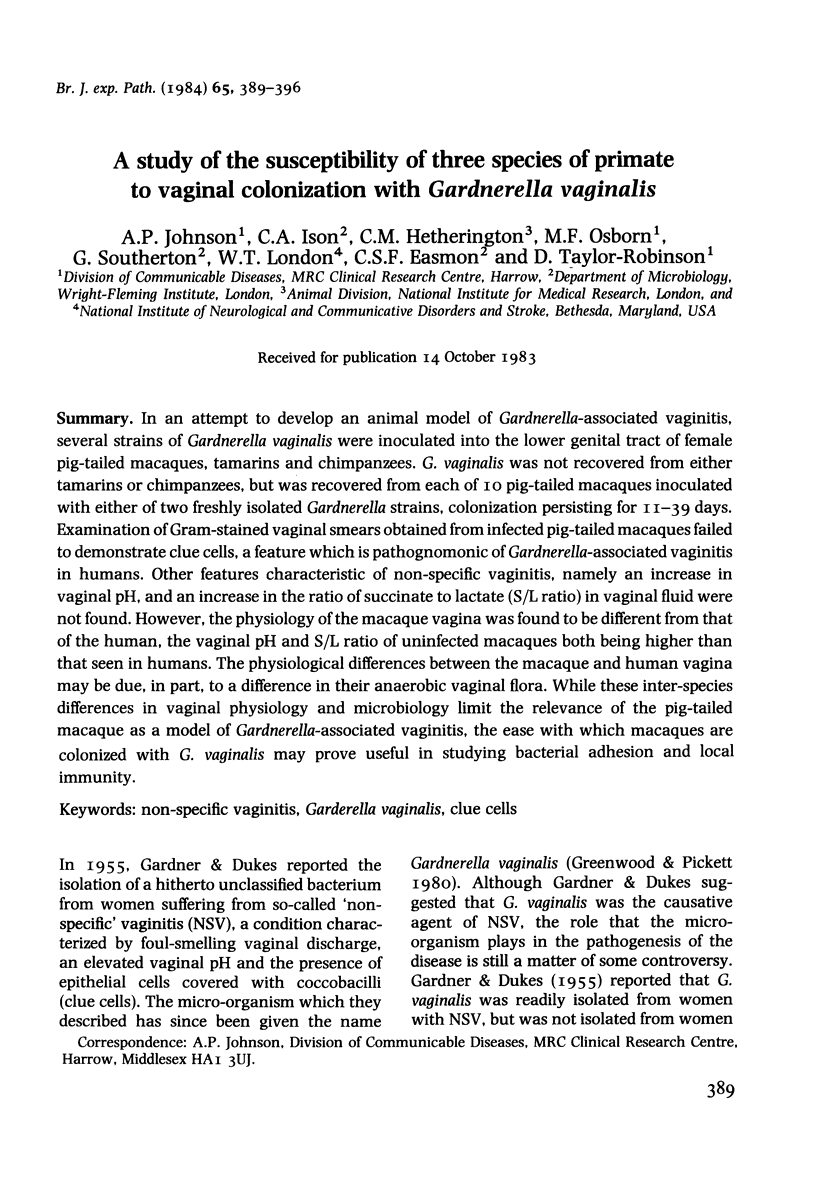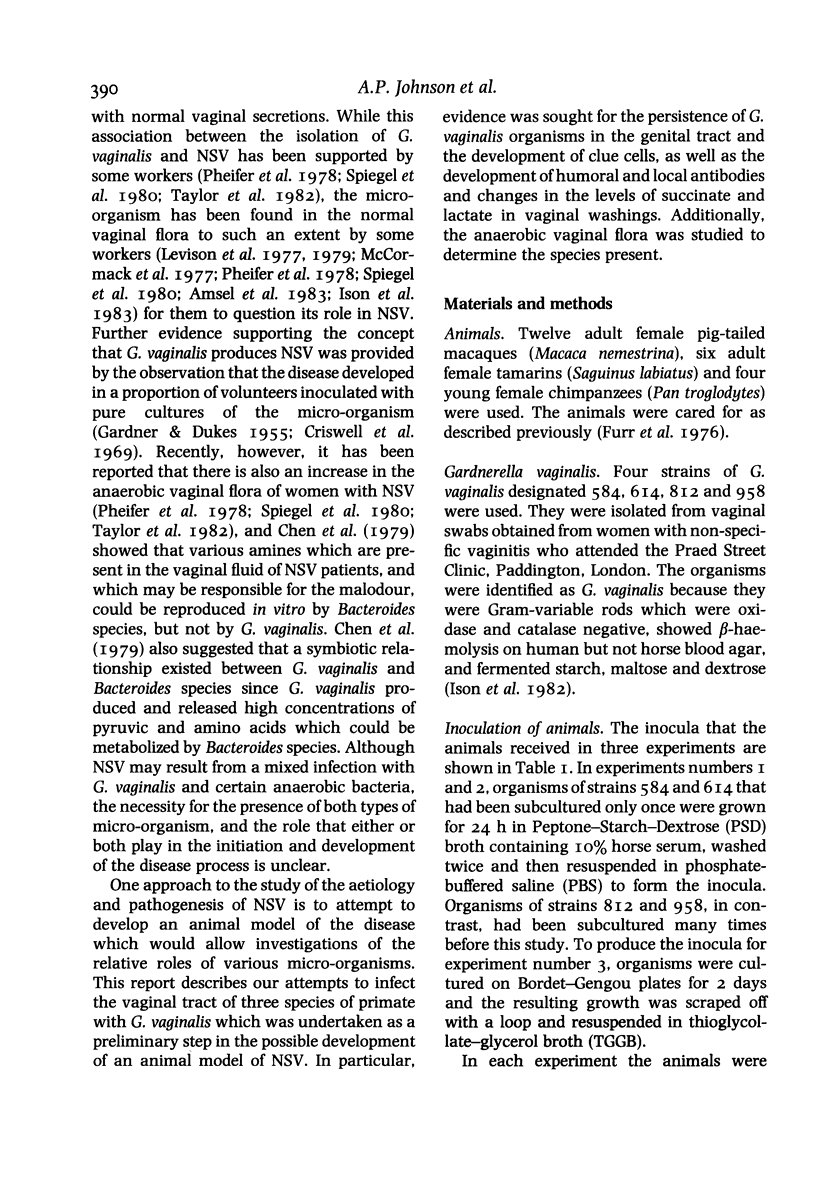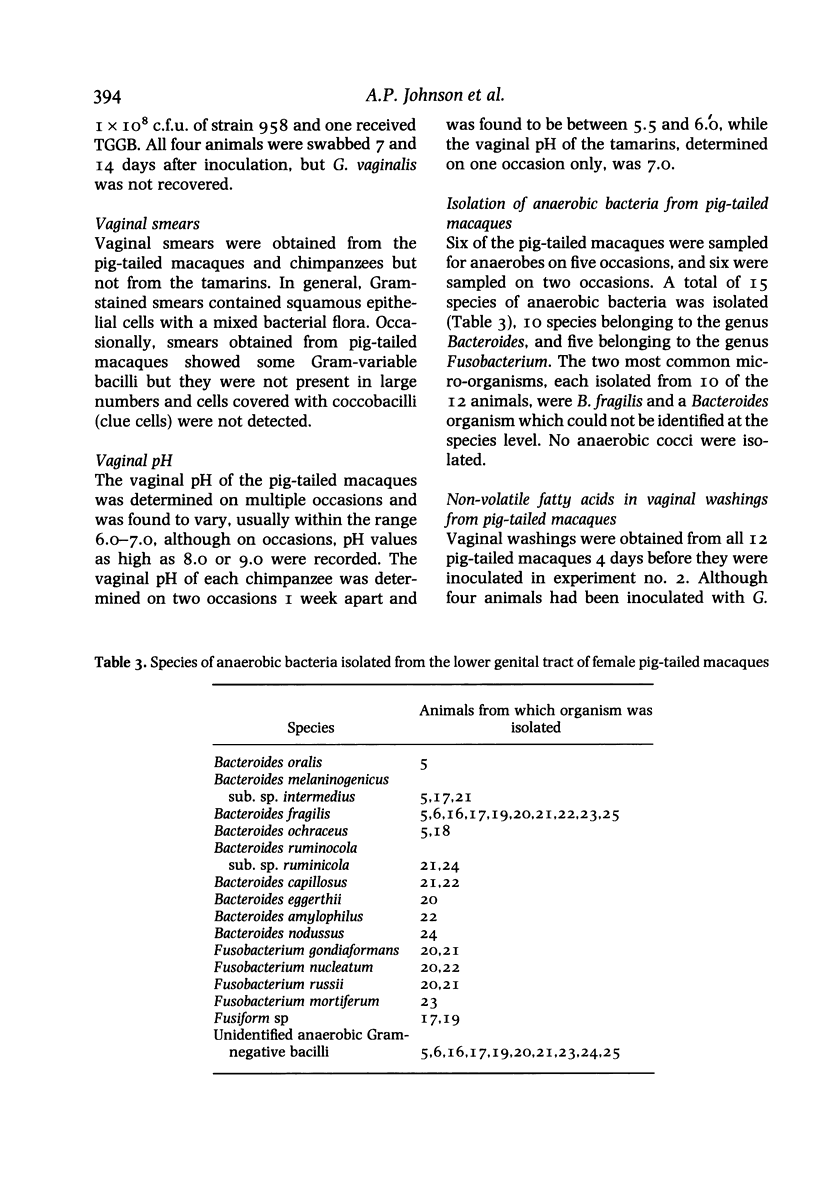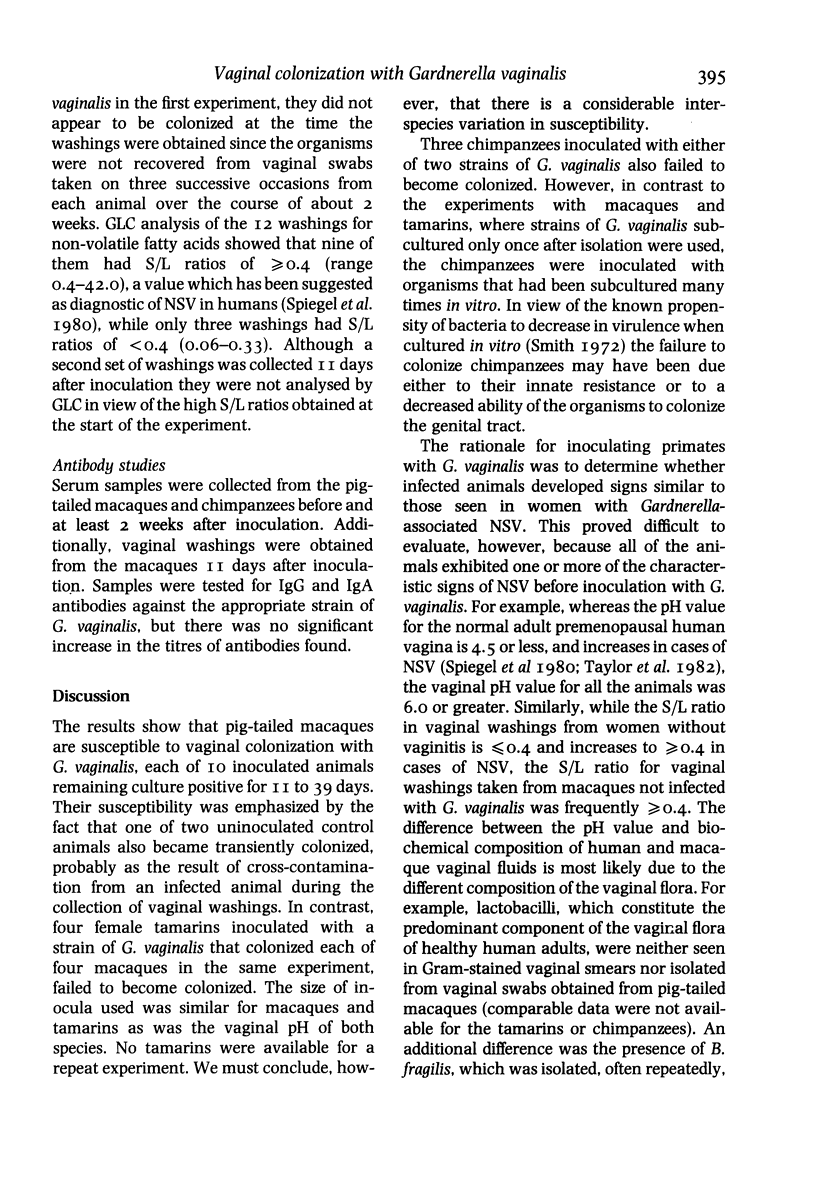Abstract
In an attempt to develop an animal model of Gardnerella-associated vaginitis, several strains of Gardnerella vaginalis were inoculated into the lower genital tract of female pig-tailed macaques, tamarins and chimpanzees. G. vaginalis was not recovered from either tamarins or chimpanzees, but was recovered from each of 1O pig-tailed macaques inoculated with either of two freshly isolated Gardnerella strains, colonization persisting for 11-39 days. Examination of Gram-stained vaginal smears obtained from infected pig-tailed macaques failed to demonstrate clue cells, a feature which is pathognomonic of Gardnerella-associated vaginitis in humans. Other features characteristic of non-specific vaginitis, namely an increase in vaginal pH, and an increase in the ratio of succinate to lactate (S/L ratio) in vaginal fluid were not found. However, the physiology of the macaque vagina was found to be different from that of the human, the vaginal pH and S/L ratio of uninfected macaques both being higher than that seen in humans. The physiological differences between the macaque and human vagina may be due, in part, to a difference in their anaerobic vaginal flora. While these inter-species differences in vaginal physiology and microbiology limit the relevance of the pig-tailed macaque as a model of Gardnerella-associated vaginitis, the ease with which macaques are colonized with G. vaginalis may prove useful in studying bacterial adhesion and local immunity.
Full text
PDF







Selected References
These references are in PubMed. This may not be the complete list of references from this article.
- Amsel R., Totten P. A., Spiegel C. A., Chen K. C., Eschenbach D., Holmes K. K. Nonspecific vaginitis. Diagnostic criteria and microbial and epidemiologic associations. Am J Med. 1983 Jan;74(1):14–22. doi: 10.1016/0002-9343(83)91112-9. [DOI] [PubMed] [Google Scholar]
- Chen K. C., Forsyth P. S., Buchanan T. M., Holmes K. K. Amine content of vaginal fluid from untreated and treated patients with nonspecific vaginitis. J Clin Invest. 1979 May;63(5):828–835. doi: 10.1172/JCI109382. [DOI] [PMC free article] [PubMed] [Google Scholar]
- GARDNER H. L., DUKES C. D. Haemophilus vaginalis vaginitis: a newly defined specific infection previously classified non-specific vaginitis. Am J Obstet Gynecol. 1955 May;69(5):962–976. [PubMed] [Google Scholar]
- Ison C. A., Dawson S. G., Hilton J., Csonka G. W., Easmon C. S. Comparison of culture and microscopy in the diagnosis of Gardnerella vaginalis infection. J Clin Pathol. 1982 May;35(5):550–554. doi: 10.1136/jcp.35.5.550. [DOI] [PMC free article] [PubMed] [Google Scholar]
- Ison C. A., Easmon C. S., Dawson S. G., Southerton G., Harris J. W. Non-volatile fatty acids in the diagnosis of non-specific vaginitis. J Clin Pathol. 1983 Dec;36(12):1367–1370. doi: 10.1136/jcp.36.12.1367. [DOI] [PMC free article] [PubMed] [Google Scholar]
- Levison M. E., Trestman I., Quach R., Sladowski C., Floro C. N. Quantitative bacteriology of the vaginal flora in vaginitis. Am J Obstet Gynecol. 1979 Jan 15;133(2):139–144. doi: 10.1016/0002-9378(79)90464-2. [DOI] [PubMed] [Google Scholar]
- McCormack W. M., Hayes C. H., Rosner B., Evrard J. R., Crockett V. A., Alpert S., Zinner S. H. Vaginal colonization with Corynebacterium vaginale (Haemophilus vaginalis). J Infect Dis. 1977 Dec;136(6):740–745. doi: 10.1093/infdis/136.6.740. [DOI] [PubMed] [Google Scholar]
- Pheifer T. A., Forsyth P. S., Durfee M. A., Pollock H. M., Holmes K. K. Nonspecific vaginitis: role of Haemophilus vaginalis and treatment with metronidazole. N Engl J Med. 1978 Jun 29;298(26):1429–1434. doi: 10.1056/NEJM197806292982601. [DOI] [PubMed] [Google Scholar]


